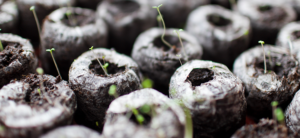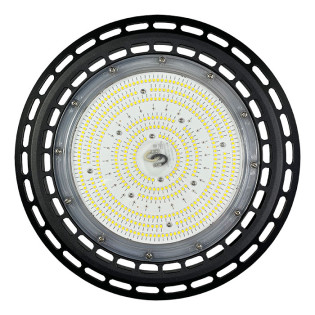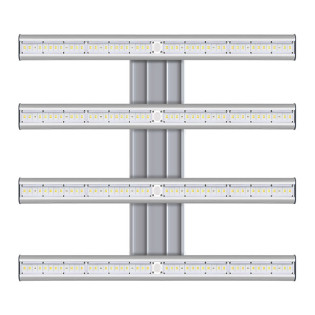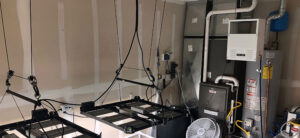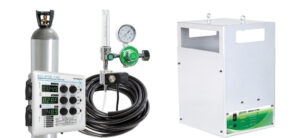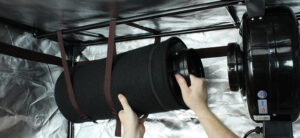
Growing isn't as tough as it seems, but there are certainly a few common mistakes growers make their first time around.
A lot of it has to do with undergoing it or overdoing it, in terms of water, nutrients, pesticides, plant count and size.
Such mistakes usually end up affecting the overall yield, potency, and health of the garden.
If you are a first time grower, or even if you have a couple grows under your belt, this guide will help you avoid the common pitfalls of new growers.
Mistakes With Watering Plants
Easily one of the most common mistakes new growers make is with watering. They either water too little, or too much. But, overwatering is usually more common.
Inexperienced growers dramatically overestimate how much water plants need, along with the frequency they should be watering at.
This is especially common indoors, where conditions are milder and thus the media doesn't dry up as quickly. But, outdoor growers can overwater too.
The effects of overwatering can lead to root rot, a deadly plant disease, along with other molds and mildews. Underwatering on the other hand, will lead to slow, sickly growth, and if not remedied, plant death as well.
We have an entire guide on how to properly water plants. But the gist of it is this: give your plants a full drench every 3 or so days.
You can be sure its time to water your plants by sticking your finger in the media about an inch deep (up to your first knuckle). If its dry, you need to water.
Mistakes With Feeding Plants Nutrients

Perhaps just as common as making mistakes with watering is making mistakes with feeding. Its also true that growers more commonly overfeed plants nutrients, rather than underfeed, but both occur.
The reason for this is growers assume that more is better, and heavier feeding will give your plants the nutrition they need to grow huge and provide potent yields. But, this is not the case.
Not only will overfeeding lead to problems with your plants development and potentially cause nutrient toxicity, but it results in harsh tasting, unimpressive flower.
Plus overfeeding can lead to nutrient imbalance, which is a whole mess on its own. The best way to avoid overfeeding is by following your nutrient feeding schedule accurately.
For a more detailed idea of how to avoid this common mistake growers make, check out our guide on how often you should be feeding nutrients.
Failing To Test pH With Every Watering/Feeding
This is less of a mistake, and more of a pure laziness thing.
But, many of the weird plant irregularities you'll experience early on aren't an issue with nutrients, or a mutation, but rather an imbalance in pH.
We recommend you read our complete guide on the relationship between nutrients and pH.
It will give you a detailed understanding of why pH matters. But the cliff notes version is this: failing to adjust pH to the ideal range leads to nutrient lockout, which can lead to a whole host of problems.
Plants need water/nutrient formula pH'd between 5.8-6.8 for the best absorption rates. While it may seem like a hassle, testing and adjusting your pH is essential.
And with a basic pH pen along with some pH adjusters, it won't take you more than a minute and can prevent you from ever having to diagnose any plant issues.
Growing Too Many Plants
Many growers try and start off with a serious grow with 6+ plants, underestimating how much work growing can be.
We recommend starting with just a few plants. It will lower the chances that you get overwhelmed, and allow you to focus your energy on just a few plants rather than trying to tend a large garden.
Growing too many plants can also lead to overcrowding your garden or grow room, as you underestimate the size these plants can grow to.
Your 6 seedlings might fit fine in your 3' x 3' grow tent, but you won't fit all 6 of those in the same space a few weeks into flower.
You'll end up with an overcrowded grow space, and will likely have to remove a few plants, which means you wasted time and resources over the grow cycle. So, just start with a couple plants. Dip your toes in before going full boar.
Not Accounting For The Stretch In Flower
Another one of the common mistakes growers make early on is not accounting for the stretch your plants will make when you flip to flower.
This is something you won't understand truly until you experience it in your own grow room.
When you flip your lighting schedule from 18/6 to 12/12, your plants will respond by stretching towards your grow lights rapidly. In some instances, you may see up to a 50% increase in the height of your plants.
The reason this is a problem is because when growing indoors, you are limited on head height. You risk your plants outgrowing your tent or room, and growing up into your grow lights where they can suffer heat stress or get burned/bleached.
So, research the specific strain you're growing and see what those who've grown it say about its stretch. Account for at it to increase in height by 50%, and budget your space accordingly.
Mistakes With Harvest Timing
New growers are notorious for chopping their plants down prematurely. In fact, this is one of the most common mistakes growers make and it can have detrimental effects on harvest quality.
Its totally understandable to be eager to harvest your plants, but its really important you harvest within the ideal window.
Often times, mistakes with harvest timing aren't even due to lack of patience. Instead, inexperienced growers simply can't tell if their plants are done or not.
The only way to know for sure is by using a jewlers loupe, or a magnifier to closely examine the trichomes. These are the best indication of where your buds are at progress-wise.
If you see long, white hairs on your buds, you still have a ways to go. At this point, the flowers are not going to be very potent or dense. Once you start seeing darker, orange hairs on your flowers, you can examine the trichomes.
If under the microscope you see clear trichomes, you still have a ways to go. Once these start to turn milky, you aren't quite there, but you're getting closer.
Once you are at the point where your trichomes are all milky, you are at peak potency. This is a great time to harvest if you are looking for a euphoric, more medicating feeling from your flower.
If you want, you can continue waiting until trichomes become amber. While potency will be lower at this point, you will achieve a more relaxing, couch locked sensation from your flower.
As you get a few grows under your belt you can experiment with harvest timing to determine how you like your buds. But, just make sure you don't harvest too early at first.
For a better understanding of how harvest works, check out our complete guide on harvesting your plants.
Using Poor Genetics & Expecting Top Shelf Results
Something a lot of new growers don't think about is the genetics of their plant. You can only grow as good of flower as your specific genetics will allow, and this is certainly the limiting factor.
If you use an unknown seed you found in your flower, you cannot expect to achieve the same yield, potency, and quality as someone who purchases premium, feminized seeds from a legitimate seed bank.
Even with the best grow lights, nutrients, and environment, your grow will only be as good as your genetics. So some of your budget should definitely go towards finding a great set of seeds or clones to start from.
Using Weak Grow Lights

When growing outdoors, your plants have access to the greatest light source of all - the sun.
But, when you start growing indoors, you need to replicate it to the best of your ability with grow lights. Many first-time growers try and use any old light, such as a desk lamp or a fluorescent bulb they got at Home Depot.
But, you need to use a specialized grow light that provides power, efficiency, along with an optimized spectrum for growing plants.
There are lots of different types of grow lights, but the most commonly used are LED, CMH, and MH/HPS. Fluorescent lights are sometimes used as well, but only for starting seeds or clones, as they aren't powerful enough to take most plants through flower.
Many growers make the mistake of buying a cheap, LED panel on Amazon because of the price point. The reality is, most of these lights are not very powerful, they don't feature the ideal spectrum for all stages of plant growth, and they have problems often.
You are better off spending the money on a reputable brand. Some of the most popular names in the industry are:
These brands produce the best grow lights out there, no question. But the price point scares a lot of new growers off, and understandably so.
If you are looking for the best grow light to get started with, you cannot go wrong with the Covert UFO or the Covert LED-X.
The Covert UFO is great for grows with a footprint of 3' x 3' or smaller, and costs less than $150! its just 150 watts too, and you'll barely notice it on your energy bill.
If you have a bit larger grow, you should stick with the Covert LED-X 250w LED. This covers a footprint of up to 5' x 5', and operates incredibly efficiently while putting out super intense, powerful light.
Need Help Setting Up Your First Grow?
Now that you are prepared to avoid some of the common mistakes growers make, you are ready to get growing.
If you are looking to start your first grow on the right foot and give yourself the highest chance of success possible, you are in the right place.
Here are Hydrobuilder, we carry everything hobby or commercial growers could ever need to get started and produce some of the heaviest, most potent plants possible.
Why You Should Start In A Grow Tent Kit

Grow tent kits are easily the best way to get started if you are looking to grow indoors.
They contain the mess of your grow (including smell!) and allow you to optimize the environment for your plants without affecting conditions in your home.
Our grow tent packages come with everything you need in one convenient package:
- Grow Tent
- Grow Light
- Ventilation System
- Timers, Thermometers, and more!
All you need is to add a growing method (soil/pots or hydroponics), and you are ready to grow!
You can choose one of our preconfigured grow tent kits, or you can build one your own way, choosing specific components that meet your needs.
By using one of these tents, you have less of a chance of making some of these common mistakes growers make.
You won't have to worry about the environment, which is a whole beast on its own. You'll also be able to rest assured your light is powerful enough for your grow.
And, we will give you an accurate recommendation of how many plants you can/should grow in your tent.
Whether you want a budget-friendly tent package or a high-end kit to set you up for life, we have it here at the best prices, with the best selection and service online.





